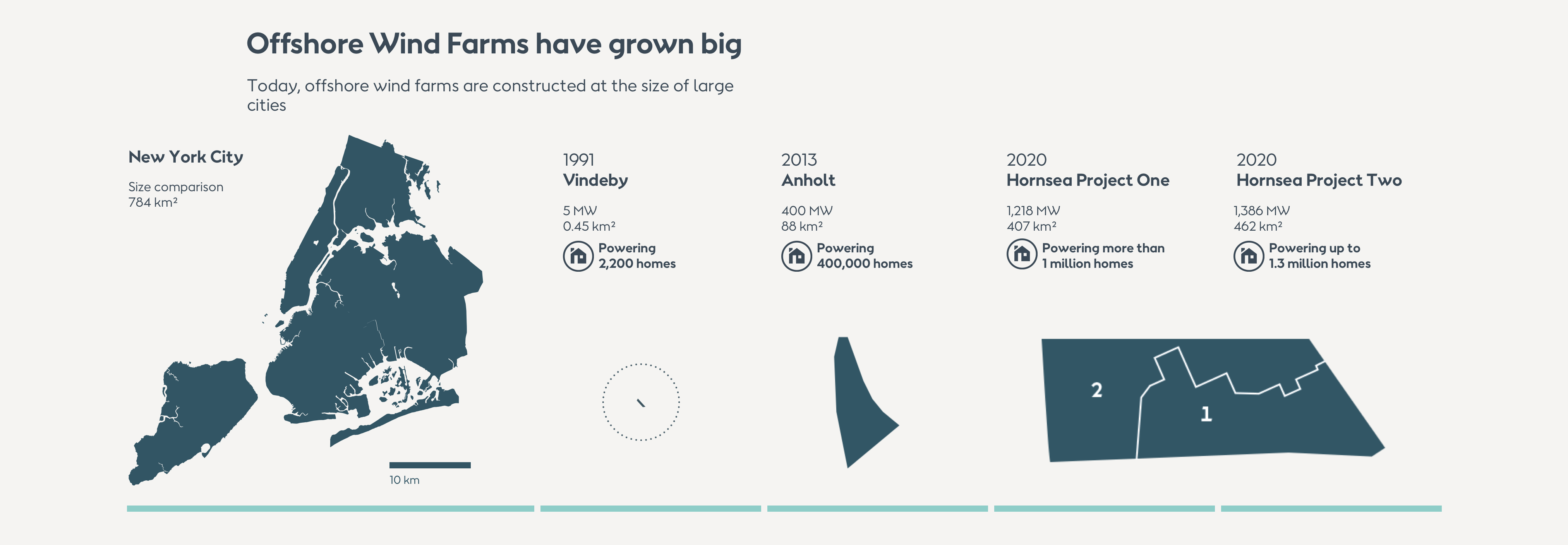2002-2011 Scaling up
By the turn of the millennium, a sizable pipeline of upcoming projects in north-western Europe started to emerge.
The technology was moving forward. In 2002, Horns Rev 1 was commissioned in the North Sea west of Denmark. At 160MW, Horns Rev was a significant technological milestone, marking the transition from the demonstration phase to utility scale offshore wind power plants. It was the first offshore wind farm to use steel monopile foundations 18km from the coastline, and the first to have its own designated offshore substation.
Pipeline emerges in the UK
The UK’s first seabed leasing round, launched by The Crown Estate in 2000, made the UK the leading offshore wind energy market overnight. The result was a total of 1,100MW to be installed across 11 projects in the following years. The UK model let developers propose sites for new projects, which allowed for competition in scoping and pre-development of projects.


